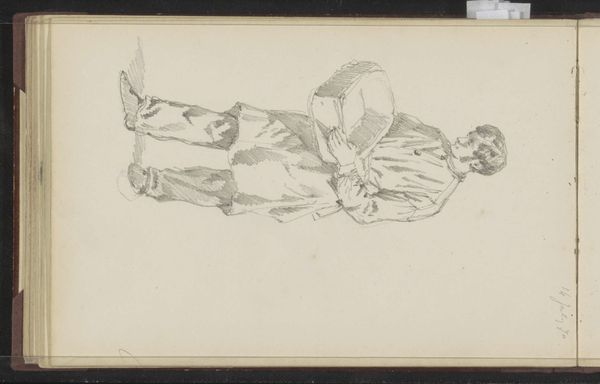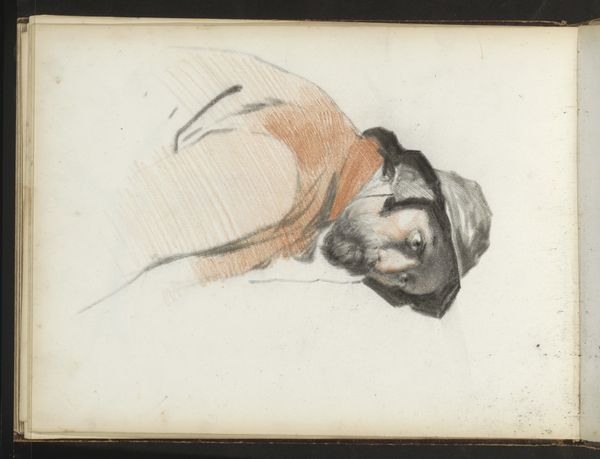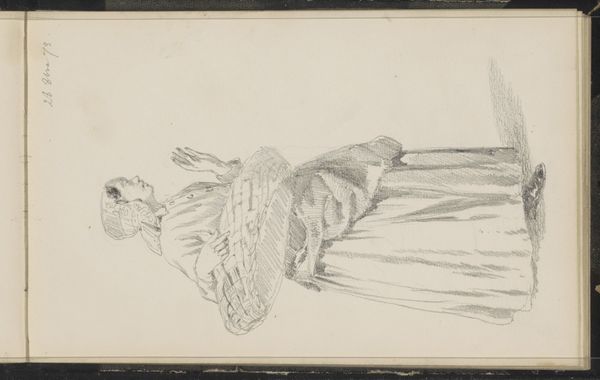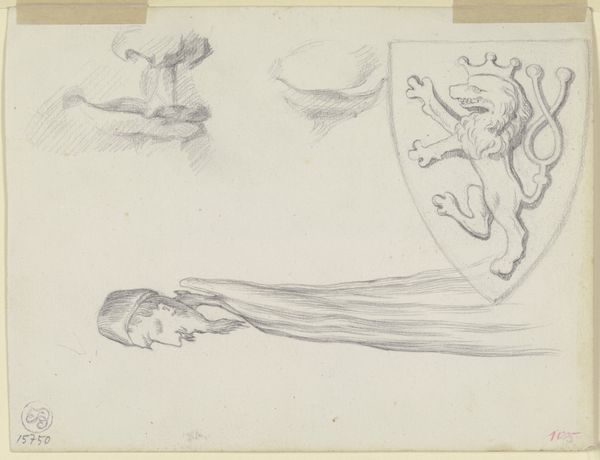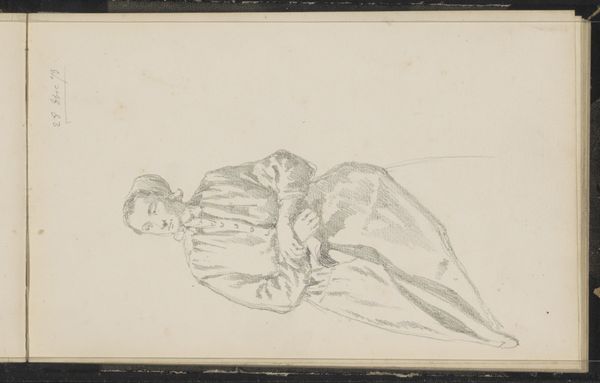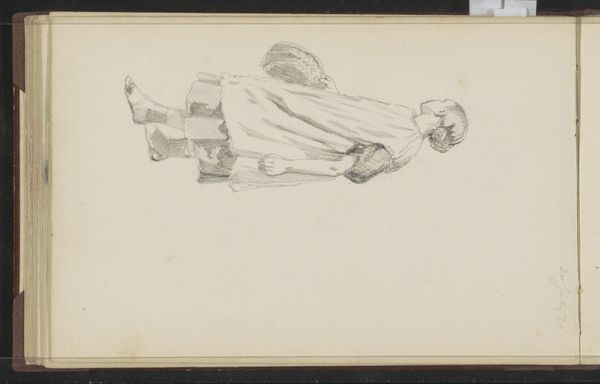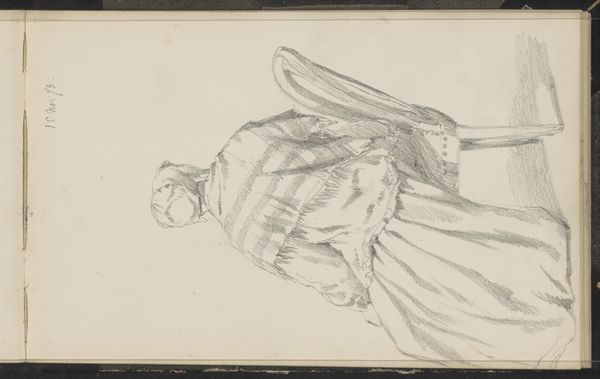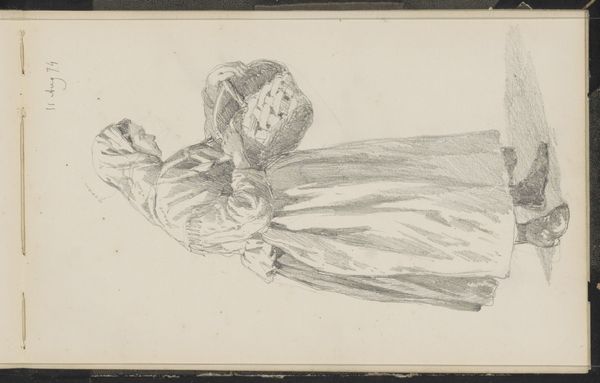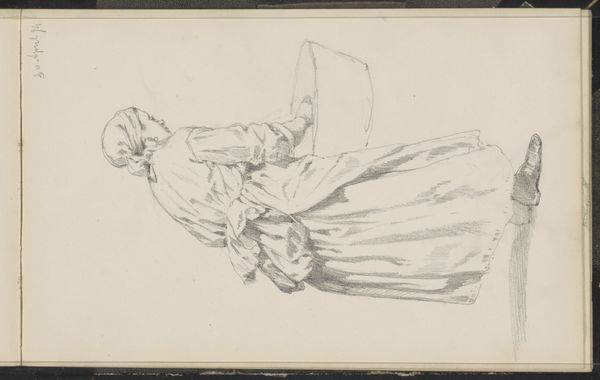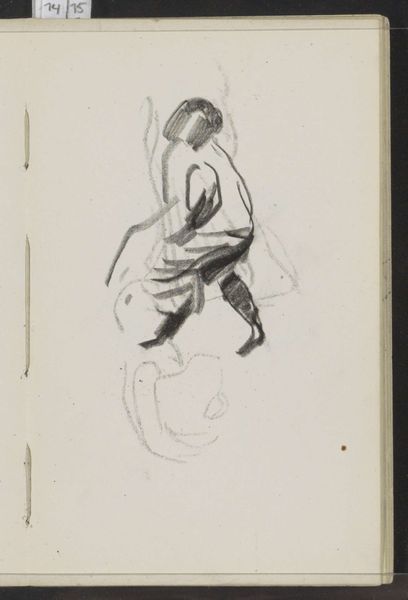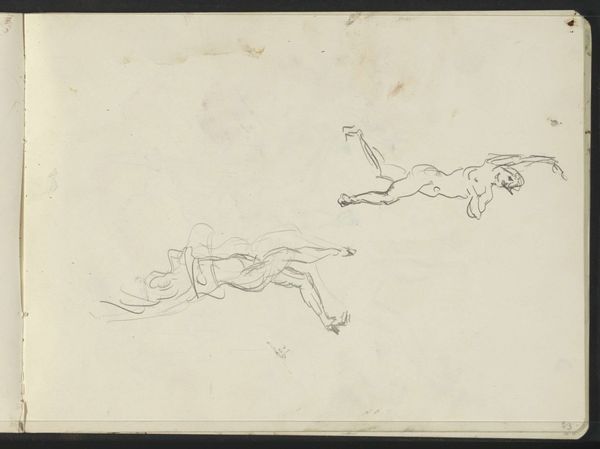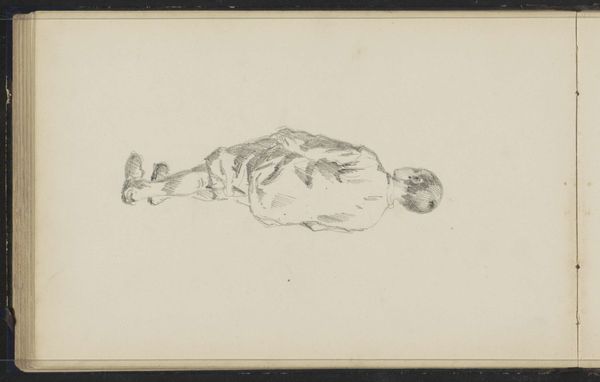
drawing, pencil, charcoal
#
portrait
#
drawing
#
pencil sketch
#
charcoal drawing
#
pencil
#
portrait drawing
#
charcoal
#
watercolor
#
realism
Copyright: Rijks Museum: Open Domain
Curator: This is Reinier Craeyvanger's "Girl at a Spinning Wheel," estimated to have been created sometime between 1822 and 1880. It’s a pencil and charcoal drawing, touched with watercolor. It's currently held here at the Rijksmuseum. Editor: My first thought is the figure’s quiet resignation. Her head is bowed, her face serene almost to the point of sadness. The spinning wheel looms above her like a halo of inevitable duty. Curator: I find it fascinating how this work represents a moment in time when the traditional role of women in society was beginning to be both idealized and scrutinized. The spinning wheel itself becomes a symbol of domestic virtue. The setting seems like it could be both outside in an undefined landscape and indoors; social mores were reflected and perpetuated through these seemingly innocent portrayals. Editor: Absolutely, it speaks volumes. Consider the wheel—an ancient symbol of fate and time, often linked to female deities. The girl’s connection to it suggests a life preordained, woven thread by thread. Note also the limited color palette; only her collar is suggested in light red. This adds to the weight of her destiny. What about her placement within the drawing itself, though? She seems quite small relative to all the available paper surrounding her, almost overwhelmed. Curator: It’s true, the composition makes her seem isolated, which could speak to the limited opportunities available to women during that period. Art institutions historically validated and reinforced such societal norms, so displaying this drawing within our collection brings up important conversations about the depiction—and the reality—of women's lives. Editor: I also can’t help but see this work as more than just a social document. There's an ethereal quality to the shading, almost dreamlike. I see a universality that resonates across generations. Curator: I agree. Even with its historical context, the artwork taps into fundamental themes about work, duty, and personal identity, raising enduring questions about our relationship to societal expectations. Editor: Yes, questions that still prompt a double take centuries later, and encourage one to think more deeply about that seemingly docile and traditional domestic scene depicted.
Comments
No comments
Be the first to comment and join the conversation on the ultimate creative platform.
